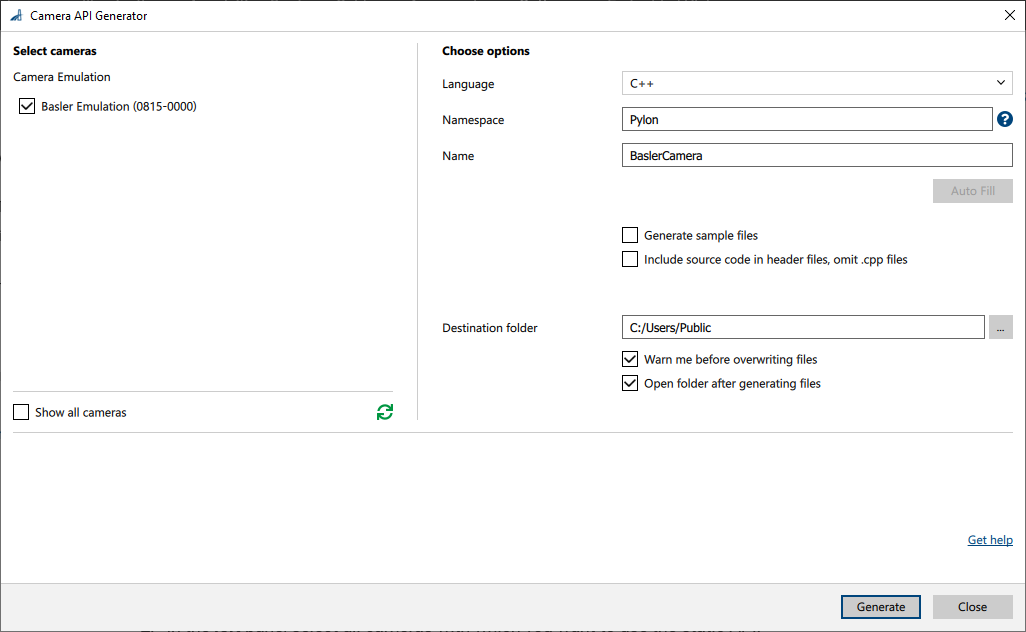Camera API Generator#
您可以选择一个或多个连接的相机,并生成一个只包含那些相机所支持参数的静态 API(C++、C# 或 VB.NET)。
这使您可以在开发应用程序时专注于您真正需要的内容。
生成静态 API#
要为您的相机生成静态 API:
-
Open the Camera API Generator by right-clicking a camera in the Devices pane or clicking Tools > Camera API Generator.

-
In the left pane, select all cameras with which you want to use the static API.
You can select any connected camera or camera emulation device. If you have selected a camera in the Devices pane, this camera is preselected.
By default, duplicate cameras are hidden. This is because you only need one static API for all cameras of a specific type. To display all cameras, select Show all cameras. -
In the right pane, adjust the settings for the static API:
-
语言:选择所需的 API 语言,C++、C# 或 VB.NET。
如果您需要多种语言,则必须为每种语言生成一个单独的静态 API。 -
命名空间:输入 API 所需的命名空间,或单击自动填充以使用当前所选语言的默认命名空间。
使用分号创建嵌套命名空间。例如,要定义Namespace::Subnamespace命名空间(C++ 表示法),请输入Namespace;Subnamespace。 -
名称:输入 API 所需的名称,或单击自动填充以使用默认名称。
该名称将用作所生成文件、模块和类的前缀。 -
生成示例文件:如果要生成示例文件(包括项目解决方案 .sln 文件)以及静态 API 文件,请选择此选项。
-
在头文件中包含源代码,忽略 .cpp 文件:仅在语言设置为 C++ 时可用。
如果选中,通常包含在 .cpp 文件中的 C++ 源代码将包含在头文件(.h 文件)中,并且仅生成头文件。 -
目标文件夹:选择要保存静态 API 的文件夹。如果该文件夹不存在,则予以创建。
-
-
单击生成。
生成的文件将放置在指定的目标文件夹中。